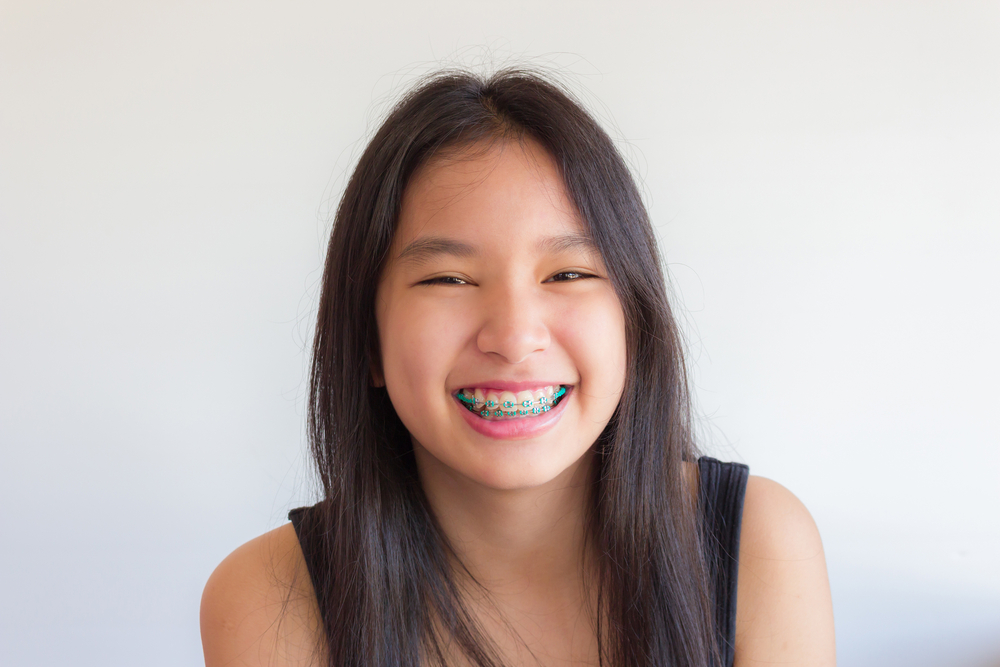
As a parent, hearing that your child needs orthodontic treatment as young as age 7 or 8 can come as a big surprise. While my team and I do treat kids conservatively and only recommend early intervention if there’s a clear health or functional benefit, there are cases when it can make a huge difference.
To help give you a better idea of the process and benefits, I’ll be answering some of the most common questions I get surrounding phase 1 orthodontic treatment here at Jeffrey Kwong Orthodontics.
1. Why do so many young kids have braces these days?
It can seem like braces for young kids are becoming increasingly common, especially considering it was pretty much unheard of even a few decades ago.
It’s not that kids’ teeth are getting worse. Instead, for certain orthodontic problems, as opposed to having a patient spend years in braces with bulky headgear when they’re 14, we can now identify the issue earlier and intercept it by guiding the growth of the jaw and facial bones. This can prevent an emerging concern from ever becoming a full-blown problem. While the patient might still need braces, Invisalign® or InBrace® hidden braces in their teenage years, treatment will be easier, faster, and, of course, headgear-free.
My personal philosophy is that I like to minimize the use of braces for young children, and address mainly skeletal problems. In most scenarios, it’s more efficient to wait until later to handle moving teeth around, though, in rare instances, waiting would be detrimental. An early evaluation with an orthodontist is important because it gives you the opportunity to ask about your child’s specific case and the benefits of starting treatment or holding off.
If braces are absolutely necessary, they’re only bonded to certain teeth. In most cases, different orthodontic appliances are used instead, and then kids get braces as part of phase 2 orthodontic treatment.
2. At what age should a child have their first orthodontic visit?
The American Association of Orthodontists recommends kids have their first orthodontic evaluation when parents notice signs of an orthodontic problem or no later than age 7.
At this point, the first permanent molars are in, which establish the back of the bite, giving me an idea of how their smile is shaping up. This is just a baseline exam and doesn’t necessarily mean your child will be leaving the office with phase 1 braces or an appliance.
At Jeffrey Kwong Orthodontics, these growth and development check-ups are complimentary. The majority of children won’t need treatment right away. Instead, they’ll come back about every nine months so I can monitor their development. This gives me the ability to pinpoint the best age for braces, InBrace or Invisalign Teen treatment to start, usually around age 12 or 13, based on their unique needs.
If certain red flags are spotted, on the other hand, early orthodontic treatment could be recommended. If that’s the case, early intervention while a child is in a stage of growth where their upper jaw hasn’t fused yet, lets us develop the jaw size to create space.
3. What problems is the orthodontist looking for in younger kids?
Some orthodontic issues are obvious, while, in other cases, the problem is subtle and a child’s teeth may otherwise look pretty straight. As a certified specialist in orthodontics and dentofacial orthopedics, I have expertise in dental and facial anatomy and the extra training to detect orthodontic issues while they’re still emerging.
The things I look for at a growing child’s first orthodontic exam include:
-
- Front crossbite (anterior crossbite) – one or more of the top teeth in the front of the mouth are behind the bottom teeth
- Back crossbite (posterior crossbite) – some of the back upper teeth sit on or inside of the lower teeth
- Crowding – whether it’s a normal/age-appropriate amount
- Open bite – upper and lower teeth don’t overlap over the top of each other
- Protruding or overjet teeth – which may be more prone to injury
- Excessive overbite (deep bite) – the top front teeth cover too much of the bottom teeth when the back teeth are closed
- Underbite – the bottom teeth sit in front of the top teeth
- Spacing
- Oral habits – i.e., thumb sucking, tongue thrust, prolonged pacifier use, etc.
- Extra or missing teeth
- Eruption pattern – are teeth coming in the right direction?
- Eruption timing – are teeth coming in at the right time?
- Airway issues – i.e., mouth breathing, snoring and obstructive sleep apnea
Not all of these problems require early intervention. Our main goal at JKO is age-appropriate treatment, and, commonly, we’ll take a wait-and-see approach. We’ll monitor your kiddo over the years to determine the ideal time to start orthodontic treatment in order to achieve the best results in the least amount of time. If there are skeletal or bone-related concerns, the timing may be sooner than it would be for bite or tooth-related concerns.
4. When is early orthodontic treatment necessary?
Orthodontic problems can be tooth or jaw related. If they’re tooth problems, meaning they’re related to the positioning of the teeth, they can often be fixed at any age unless the teeth are sticking out in a way that makes them susceptible to damage.
Jaw problems involving the bones, like underbites and certain crossbites, that have to do with the size or position of the jaw are best addressed while a patient is still growing. Once jaw growth is complete, it can be impossible to achieve the same results without more invasive options, such as surgery or extractions.
Whether I recommend waiting a few years and doing a single phase of comprehensive treatment or breaking it up into two phases depends on:
- If waiting will have a negative impact on the patient’s bite or facial structure
- Whether the results will be more stable if treatment is completed in two phases
- If there is a clear health or functional benefit to early intervention
- Whether treatment will help a child’s chronological age, teeth age, and bone (statural) age all line up
Cases that may meet this criteria include:
- Extreme crowding that will cause severely displaced or impacted teeth
- Moderate to severe underbite where the upper jaw isn’t growing enough or the lower jaw is growing too much
- Certain posterior crossbites, such as those that cause a child to shift their jaw to one side to compensate, which can lead to asymmetrical jaw growth
- Severe deep bite (excessive overbite) where the lower teeth bite into the roof of the mouth
- Severe open bite that makes it difficult to eat or is causing excessive wear of the enamel at too early of an age
This list isn’t all-inclusive and I consider phase 1 orthodontics on a case-by-case basis.
5. How does two-phase orthodontic treatment work?
Phase 1 orthodontic treatment, also called early orthodontic treatment or interceptive orthodontic treatment, generally involves what’s known as dentofacial orthopedics.
What is dentofacial orthopedics? It means using orthodontic appliances to direct the growth of the jaw or facial bones in an effort to create space for the permanent teeth and relate the upper and lower jaws to each other. Usually, phase 1 is all about this orthopedic correction, while phase 2 focuses on straightening the teeth.
During phase 1 orthodontic treatment, when your child is between ages 7 and 9, they’ll wear an orthodontic appliance. They may need something like a rapid palatal expander, depending on the specific problem, or, rarely, phase 1 braces. The aim is to complete the first phase in approximately 12 months.
Once we’ve achieved our treatment goal, I’ll remove the appliance and your child will have a resting period. During this time, they’ll come in for check-ups every six to nine months.
When the remainder of their permanent teeth are in, they’ll start phase 2 orthodontic treatment, which is when they get braces, Invisalign Teen or InBrace hidden braces. The objective of this phase is to shift each tooth into the right location so it’s in harmony with the lips, tongue, cheeks, and other teeth.
After this, we’ll wrap things up by creating a customized retainer to maintain your child’s results for life.
6. How long does phase 1 orthodontic treatment take?
While it will depend on what we’re correcting and how severe the case is, my team and I try to finish phase 1 in under 12 months.
7. What are the benefits of early orthodontic treatment?
When early interceptive orthodontic treatment is necessary, the benefits are significant. Orthodontics for kids can:
- Guide jaw and facial growth
- Correct harmful oral and myofunctional habits
- Make room for the permanent teeth to come in properly
- Create facial symmetry
- Lower the risk of trauma to protruding teeth
- Reduce the need for corrective jaw surgery
- Reduce the need for tooth extractions through space management
- Help children bite, chew, speak, and breathe correctly
- Reduce the length of treatment in adolescence
- Boost kids’ self-esteem and confidence!
8. How much does phase 1 orthodontics cost?
I know that two rounds of orthodontic treatment for kids sounds pretty pricey. But, it’s important to remember that phase 1 orthodontic treatment is not comprehensive orthodontic treatment, even in the case of phase 1 braces. It has a very narrow goal and usually takes a year, which means the fees are lower.
Also, interceptive orthodontic treatment is meant to do just that: intercept an issue and prevent it from becoming a serious problem. It’s like if we see that a train is going off the track, we want to adjust the track. While it won’t necessarily take us to the final destination, it will get us closer to it. Similarly, when early orthodontics is necessary, it can make phase 2 treatment easier and faster and may help your child avoid the need for extractions and surgery.
Ultimately, the cost of phase 1 orthodontic treatment will depend on the severity of your child’s case and the type of appliance used. At Jeffrey Kwong Orthodontics, we pride ourselves on providing high quality care for a fair price. We accept most insurance plans and offer flexible financing options to ensure treatment works for your family’s budget.
Connect With a Kids’ Orthodontist in El Dorado Hills, CA
If you’re ready to put your child on the path towards their healthiest smile, schedule a complimentary consultation at Jeffrey Kwong Orthodontics today. Our bright, modern office is always filled with music, laughter, and fun. Whether your child does require phase 1 orthodontics or they’ll simply start their regular growth and development check-ups, my team and I will make visits positive and engaging.

